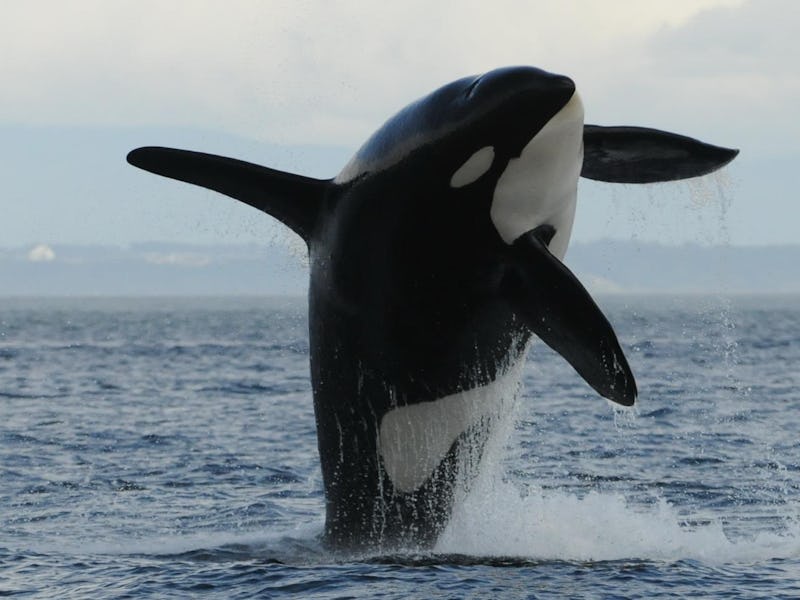Human-Like Orca Screams Elicit Crazy Behavior in the Sea
'It was crazy to see a group of animals respond so strongly.'

Survival essentially comes down to understanding the difference between friend and foe. If a stranger shouts at you on the subway for taking their seat, you know they’re not your friend. Scientists have recently discovered that this process is somewhat mirrored in ocean society, specifically when it comes to cetaceans. There, specific killer whale calls signal that something very bad is about to happen — and the other sea mammals listening have to choose whether to pick fight or flight.
In a study released Wednesday in the Journal of Experimental Biology a team of scientists says that choice is defined by whether the creature is a pilot whale or a Risso dolphin. That they are affected at all by the cry of a killer whale is a confirmation of the hypothesis that inspired the study: Other research has demonstrated that prey are capable at perceiving the level of predation risk in their environment and react accordingly. That’s why deer, for example, are more likely to run away from humans during months when recreational hunting is permitted.
See also: Scientists Think Dolphin Name Discovery Is the “Coolest”
Here, the scientists reasoned that with the huge array of calls killer whales emit into the sea, other marine mammals must be able to recognize some of those calls as being specifically dangerous. To test this, they traveled to the North Carolina coast to monitor pods of pilot whales and to the coast of Catalina Island to observe groups of Risso’s dolphins. There they played recordings of various dolphin, whale, and killer whale recordings in the water to the separate species and realized that four specific whale calls caused a frenzied reaction in both groups of animals.
“It was crazy to see a group of animals respond so strongly to something you’re doing,” co-author and Duke University Ph.D. candidate Matthew Bowers explained in a statement released Wednesday. “The strong and differential responses to this subset of killer whale calls was eye-opening.”
A Risso dolphin.
Here are some of the call examples that the scientists used: After you listen, you’ll likely be unsurprised by which caused a frenzied reaction and which did not.
This cry — which sounds more like the cackle of an evil clown than the chattering of Free Willy — is what caused the dolphins and pilot whales to freak. Comparatively, this little squeak of killer whale call didn’t cause the other animals to react.
Why you might react strongly to the first recording is tied to why the scientists think the cetaceans even reacted: Analysis of the distressing killer whale calls demonstrated that they contain sound structures similar to many other mammalian distress cries, including the sounds of wailing that humans cry out. Mammal brains have trouble filtering out the erratic sound structure of the cries, and in turn, become disturbed.
“The signal starts to jump around in unpredictable fashion,” explains Bowers. “We suggest that these calls convey information about the predator’s behavior or intent.”
That intent is likely to kill — but what’s less obvious is why pilot whales and dolphins reacted differently to the killer whale calls. Both groups reacted strongly to the threat of predation, as Bowers explained, but how that manifested depended on the animal. For there part, pilot whales assembled into a tight group that dived down toward the sound, like bees swarming into an attack. Meanwhile, the Risso’s dolphins clustered together and fled in the opposite direction at speeds of more than six miles per hour.
This varied flight or flight response isn’t understood yet but will continue to be studied. What is understood is that some killer whale calls are straight up scary, signally to all that danger is underway.
If you liked this article on whale calls, check out this video on microplastics in the ocean: